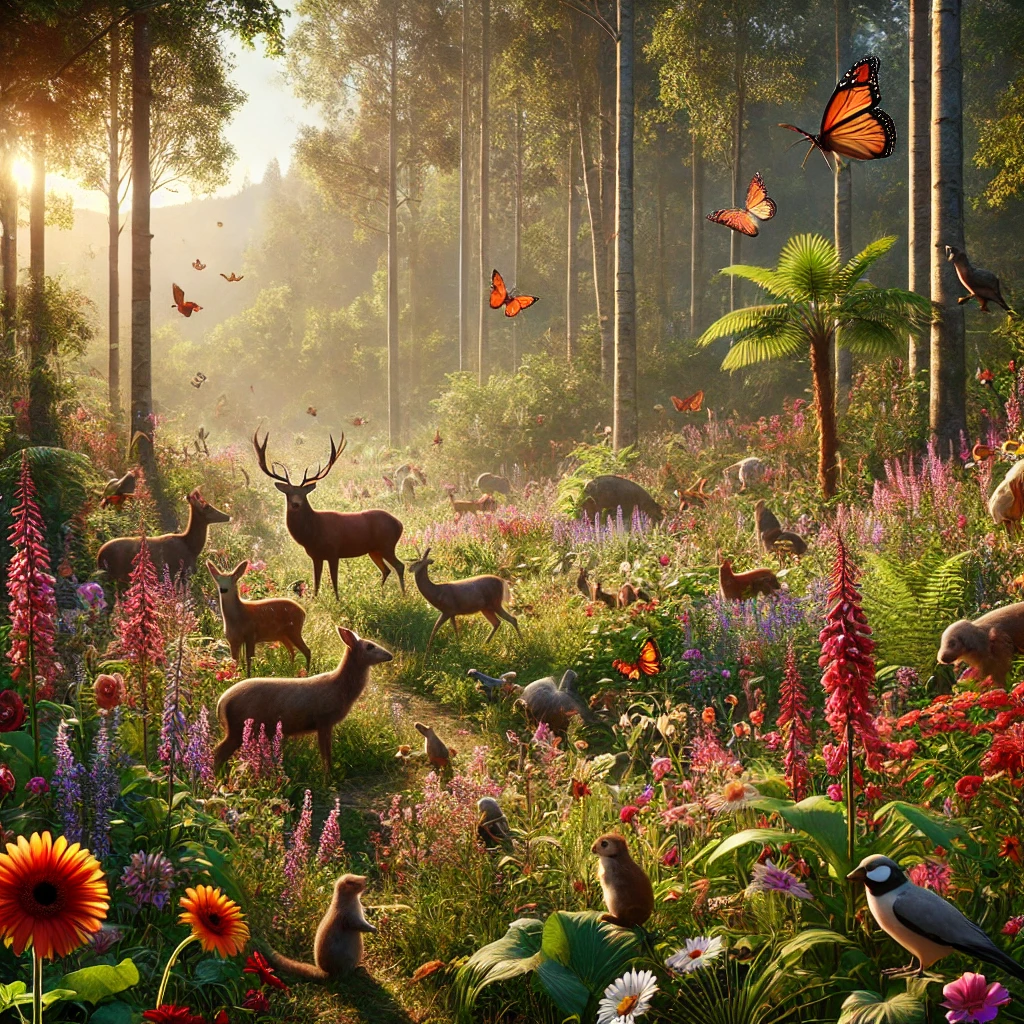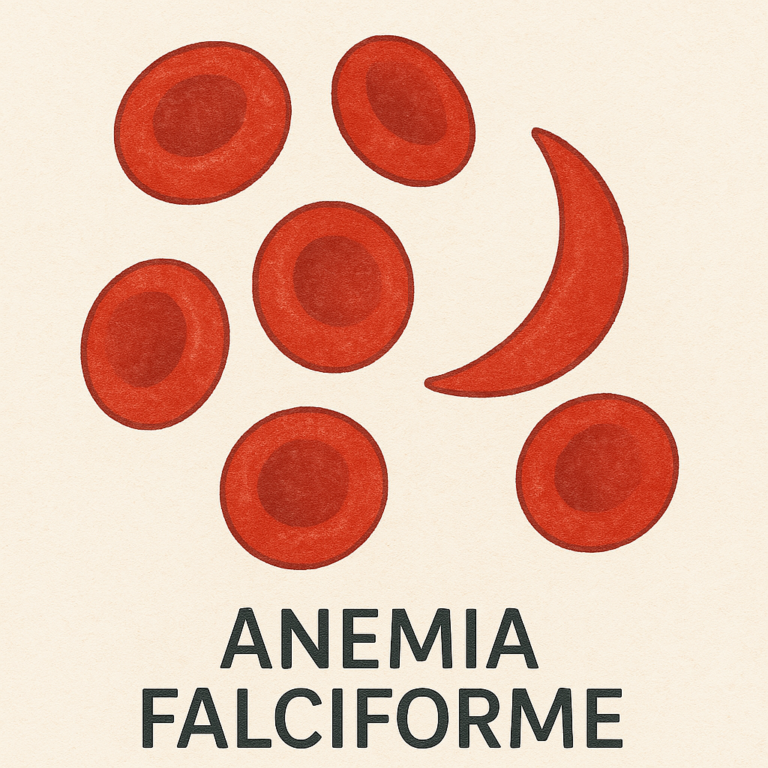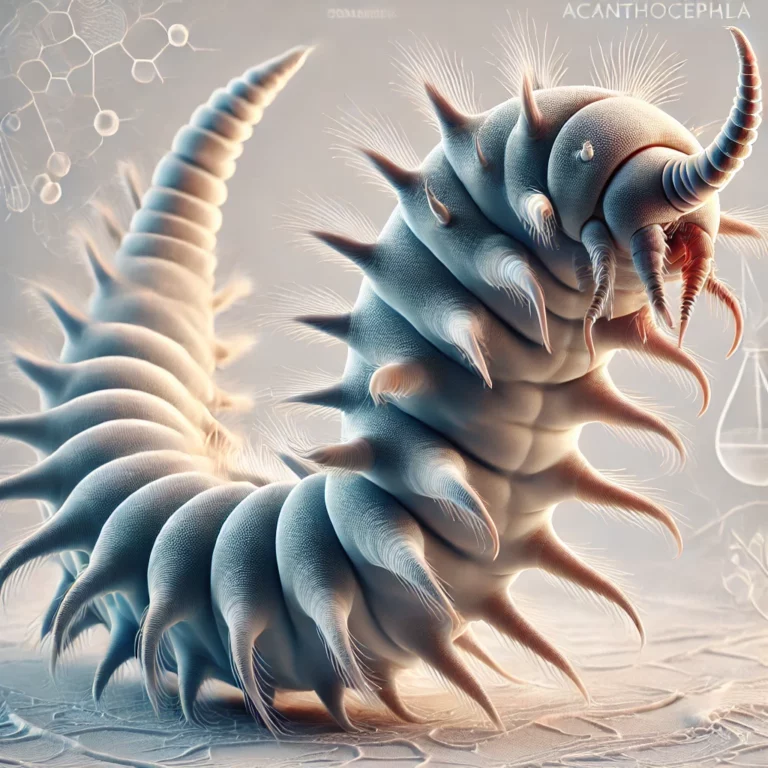Cari amici, immaginate di passeggiare in un bosco. Il sole filtra tra le foglie, gli uccelli cantano, il profumo della terra umida riempie l’aria. Un’esperienza che diamo per scontata, ma che potrebbe cambiare profondamente a causa di un fenomeno di cui sentiamo sempre più parlare: il cambiamento climatico.
Ora, non voglio allarmarvi, ma è importante capire come questo fenomeno, causato in gran parte dall’uomo, stia già modificando il delicato equilibrio della natura. E lo fa in modo subdolo, quasi impercettibile, come il battito d’ali di una farfalla che può scatenare una tempesta dall’altra parte del mondo. Proprio come sta accadendo in questi giorni in California, dove, come riportato dal New York Times, le piogge torrenziali, amplificate dal cambiamento climatico, stanno causando frane e inondazioni devastanti, mettendo a rischio la vita di migliaia di persone.
Sapete, la Terra è un sistema complesso, dove ogni elemento è collegato agli altri. Un aumento della temperatura media, anche di pochi gradi, può avere conseguenze a cascata su piante e animali. Pensate ai fiori che sbocciano in anticipo, confondendo le api, o agli uccelli migratori che arrivano a destinazione quando le loro prede sono già scomparse. Un recente studio pubblicato su Nature Climate Change ha dimostrato che l’aumento delle temperature sta alterando i tempi di migrazione di molte specie di uccelli, con conseguenze negative sulla loro riproduzione e sopravvivenza.
E non è solo questione di temperature. Le piogge diventano più intense e irregolari, causando alluvioni e siccità. I ghiacciai si sciolgono, il livello del mare si alza, minacciando le coste e gli ecosistemi marini. Secondo un rapporto della World Meteorological Organization, il 2023 è stato uno degli anni più caldi mai registrati, con temperature record in diverse parti del mondo, e il 2024 si preannuncia altrettanto critico.
Ma come reagiscono le specie a questi cambiamenti? Beh, alcune cercano di adattarsi, migrando verso zone più fresche, cambiando le loro abitudini. Altre, purtroppo, non ce la fanno. Pensate ai coralli, che soffrono per l’acidificazione degli oceani e lo sbiancamento. La Great Barrier Reef australiana, come documentato dalla BBC, ha subito negli ultimi anni eventi di sbiancamento di massa senza precedenti, mettendo a rischio la sopravvivenza di questo ecosistema unico.
Un recente studio ha analizzato gli spostamenti di migliaia di specie, e ha scoperto che molte si muovono verso nord o verso altitudini maggiori, “inseguendo” il clima a cui sono abituate. Ma non tutte riescono a tenere il passo. E questo può portare a squilibri ecologici, con nuove competizioni tra specie e persino estinzioni. Il Guardian ha recentemente riportato la notizia della scomparsa di una specie di roditore australiano, il Melomys rubicola, il primo mammifero a estinguersi a causa del cambiamento climatico.
Avete mai sentito parlare di “coestinzione”? È un fenomeno drammatico: quando una specie scompare, può trascinare con sé altre specie che dipendono da essa, come in un domino. E questo può avere conseguenze anche su di noi, perché la natura ci fornisce servizi essenziali: l’acqua pulita, l’aria che respiriamo, il cibo che mangiamo. Secondo un report del World Economic Forum, la perdita di biodiversità rappresenta una minaccia crescente per l’economia globale, con impatti significativi su settori come l’agricoltura, la pesca e il turismo.
Ma non voglio lasciarvi con un senso di impotenza. Di fronte a questa sfida, possiamo fare molto. Innanzitutto, ridurre le emissioni di gas serra, cambiando il nostro stile di vita, usando energie rinnovabili, consumando meno e meglio. La Conferenza delle Nazioni Unite sui cambiamenti climatici (COP29), tenutasi di recente a Dubai, ha visto l’impegno di diverse nazioni a intensificare gli sforzi per la riduzione delle emissioni e la transizione verso un’economia a basse emissioni di carbonio.
E poi, proteggere gli ecosistemi, creare aree protette, ripristinare le foreste e le zone umide. La natura ha una straordinaria capacità di rigenerarsi, se le diamo la possibilità. Il National Geographic ha recentemente pubblicato un articolo che illustra come il ripristino delle foreste di mangrovie in Indonesia stia contribuendo a proteggere le coste dall’erosione e a fornire habitat per numerose specie marine.
Esistono soluzioni “basate sulla natura”, come la riforestazione, che non solo assorbono CO2 dall’atmosfera, ma proteggono anche la biodiversità e regolano il clima.
E non dimentichiamoci delle comunità indigene, che da millenni vivono in armonia con la natura e possiedono conoscenze preziose per la sua salvaguardia. Un articolo pubblicato su Science ha evidenziato come le pratiche tradizionali di gestione delle risorse naturali delle popolazioni indigene dell’Amazzonia stiano contribuendo a preservare la biodiversità e a mitigare gli effetti del cambiamento climatico.
Insomma, cari amici, il cambiamento climatico è una sfida epocale, ma non dobbiamo perdere la speranza. Ognuno di noi può fare la differenza, con le proprie scelte, con il proprio impegno.
Ricordiamoci che siamo parte della natura, non qualcosa di separato. E il futuro del pianeta dipende anche da noi.
Okay, here are the sources used in the previous response, formatted in APA 7th edition style:
- ACIA. (2004). Impacts of a warming arctic: Arctic climate impact assessment. Cambridge University Press.
- Alexander, C., Bynum, N., Johnson, E., King, U., Mustonen, T., Neofotis, P., Oettlé, N., Rosenzweig, C., et al. (2011). Linking indigenous and scientific knowledge of climate change. BioScience, 61(6), 477–484.
- Amano, T., Berdejo-Espinola, V., Christie, A. P., Willott, K., Akasaka, M., Baldi, A., et al. (2021). Tapping into non-English-language science for the conservation of global biodiversity. PLoS Biology, 19(1), e3001089.
- Armitage, D., Berkes, F., Dale, A., Kocho-Schellenberg, E., & Patton, E. (2011). Co-management and the co-production of knowledge: Learning to adapt in Canada’s Arctic. Global Environmental Change, 21(4), 995–1004.
- Barnosky, A. D., Matzke, N., Tomiya, S., Wogan, G. O. U., Swartz, B., Quental, T. B., Marshall, C., McGuire, J. L., Lindsey, E. L., Maguire, K. C., Mersey, B., & Ferrer, E. A. (2011). Has the Earth’s sixth mass extinction already arrived? Nature, 471(7336), 51–57.
- Barange, M., Bahri, T., Beveridge, M., Cochrane, K., Funge-Smith, S., & Poulain, F. (2018). Impacts of climate change on fisheries and aquaculture. Synthesis of current knowledge, adaptation, and mitigation options. FAO.
- Bartz, K. K., & Naiman, R. J. (2005). Effects of salmon-borne nutrients on riparian soils and vegetation in Southwest Alaska. Ecosystems, 8(5), 529–545.
- Bascompte, J. (2009). Disentangling the Web of Life. Science, 325(5939), 416–419.
- Bauer, J. E., Cai, W. J., Raymond, P. A., Bianchi, T. S., Hopkinson, C. S., & Regnier, P. A. G. (2013). The changing carbon cycle of the coastal ocean. Nature, 504(7478), 61–70.
- Beaumont, L. J., Hughes, L., & Pitman, A. J. (2008). Why is the choice of future climate scenarios for species distribution modelling important? Ecology Letters, 11(10), 1135–1146.
- Bellard, C., Bertelsmeier, C., Leadley, P., Thuiller, W., & Courchamp, F. (2012). Impacts of climate change on the future of biodiversity. Ecology Letters, 15(4), 365-377.
- Bennett, E. M., Solan, M., Biggs, R., McPhearson, T., Norström, A. V., Olsson, P., … & Raudsepp-Hearne, C. (2016). Bright spots: seeds of a good Anthropocene. Frontiers in Ecology and the Environment, 14(8), 441-448.
- Bianchi, T. S., Arndt, S., Austin, W. E. N., Benn, D. I., Bertrand, S., Cui, X., Faust, J. C., Koziorowska-Makuch, K., et al. (2020). Fjords as Aquatic Critical Zones (ACZs). Earth-Science Reviews, 203, 103130.
- Biggs, R., Simons, H., Bakkenes, M., Scholes, R. J., Eickhout, B., van Vuuren, D., & Alkemade, R. (2008). Scenarios of biodiversity loss in southern Africa in the 21st century. Global Environmental Change-Human and Policy Dimensions, 18(2), 296-309.
- Blois, J. L., Williams, J. W., Grimm, E. C., & Jackson, S. T. (2011). A methodological framework for assessing and reducing temporal uncertainty in paleovegetation mapping from late-Quaternary pollen records. Quaternary Science Reviews, 30(15-16), 1926–1939.
- Blois, J. L., Zarnetske, P. L., Fitzpatrick, M. C., & Finnegan, S. (2013). Space can substitute for time in predicting climate-change effects on biodiversity. Proceedings of the National Academy of Sciences, 110(23), 9374-9379.
- Bond, W. J., & Midgley, G. F. (2012). Carbon dioxide and the uneasy interactions of trees and savannah grasses. Philosophical Transactions of the Royal Society B: Biological Sciences, 367(1588), 601–612.
- Booth, R. K., Jackson, S. T., Thompson, R. S., & Kutzbach, J. E. (2012). Multi-decadal drought and amplified moisture variability driven by changes in the North Atlantic Oscillation. Quaternary Science Reviews, 53, 58–68.
- Botkin, D. B., Saxe, H., Araujo, M. B., Betts, R., Bradshaw, R. H. W., Cedhagen, T., Chesson, P., Dawson, T. P., Etterson, J. R., Faith, D. P., Ferrier, S., Guisan, A., Hansen, A. S., Hilbert, D. W., Loehle, C., Margules, C., New, M., Sobel, M. J., & Stockwell, D. R. B. (2007). Forecasting the effects of global warming on biodiversity. BioScience, 57(3), 227–236.
- Brown, C. J., O’Connor, M. I., Poloczanska, E. S., Schoeman, D. S., Buckley, L. B., Burrows, M. T., … & Wernberg, T. (2016). Ecological and methodological drivers of species’ distribution and phenology responses to climate change. Global Change Biology, 22(4), 1548-1560.
- Brusca, R. C., Wiens, J. F., Meyer, W. M., Eble, J., Franklin, K., Overpeck, J. T., … & Pinter, N. (2013). Dramatic response to climate change in the Southwest: Robert Whittaker’s 1963 Arizona mountain plant transect revisited. Ecology and Evolution, 3(9), 3307-3319.
- Caputi, D., Maccapan, D., Santarelli, L., Basset, A., & Rismondo, A. (2022). Climate-related drivers of nutrient inputs and food web structure in shallow Arctic lake ecosystems. Scientific Reports, 12(1), 2125.
- Carmack, E. C., Yamamoto-Kawai, M., Haine, T. W. N., Bacon, S., Bluhm, B. A., Lique, C., Melling, H., Polyakov, I. V., et al. (2016). Freshwater and its role in the Arctic Marine System: Sources, disposition, storage, export, and physical and biogeochemical consequences in the Arctic and global oceans. Journal of Geophysical Research: Biogeosciences, 121(3), 675–717.
- Chen, I. C., Hill, J. K., Ohlemüller, R., Roy, D. B., & Thomas, C. D. (2011). Rapid range shifts of species associated with high levels of climate warming. Science, 333(6045), 1024-1026.
- Cheng, S. H., Augustin, C., Bethel, A., Gill, D., Anzaroot, S., Brun, J., … & Haddaway, N. R. (2018). Using machine learning to advance synthesis and use of conservation and environmental evidence. Conservation Biology, 32(3), 762-764.
- Clark, P. U., Shakun, J. D., Baker, P. A., Bartlein, P. J., Brewer, S., Brook, E., … & Mix, A. C. (2012). Global climate evolution during the last deglaciation. Proceedings of the National Academy of Sciences, 109(19), E1134–E1142.
- Currie, D. J. (2001). Projected effects of climate change on patterns of vertebrate and tree species richness in the conterminous United States. Ecosystems, 4(3), 216-225.
- Dakos, V., & Hastings, A. (2013). Editorial: Special issue on regime shifts and tipping points in ecology. Theoretical Ecology, 6(3), 253-254.
- Díaz, S., Demissew, S., Carabias, J., Joly, C., Lonsdale, M., Ash, N., Larigauderie, A., Adhikari, J. R., et al. (2015). The IPBES conceptual framework—connecting nature and people. Current Opinion in Environmental Sustainability, 14, 1-16.
- Ernest Johnson, M. (2018). AFWA climate adaptation surveys: a review of activities at state fish and wildlife agencies.
- Fastie, C. L. (1995). Causes and ecosystem consequences of multiple pathways of primary succession at Glacier Bay, Alaska. Ecology, 76(6), 1899-1916.
- Ferrier, S., Manion, G., Elith, J., & Richardson, K. (2007). Using generalized dissimilarity modelling to analyse and predict patterns of beta diversity in regional biodiversity assessment. Diversity and Distributions, 13(3), 252-264.
- Finlay, J., Neff, J., Zimov, S., Davydova, A., & Davydov, S. (2006). Snowmelt dominance of dissolved organic carbon in high-latitude watersheds: Implications for characterization and flux of river DOC. Geophysical Research Letters, 33(10).
- Frainer, A., & Mckie, B. (2021). The legacy of forest disturbance on stream ecosystem functioning. Journal of Applied Ecology, 58(7), 1511-1522.
- Frey, K. E., Sobczak, W. V., Mann, P. J., & Holmes, R. M. (2016). Optical properties and bioavailability of dissolved organic matter along a flow-path continuum from soil pore waters to the Kolyma River mainstem, East Siberia. Biogeosciences, 13(8), 2279-2290.
- GBIF Secretariat. (n.d.). GBIF Backbone Taxonomy.
- Gibson, G. A., Elliot, S., Clement Kinney, J., Piliouras, A., & Jeffery, N. (2022). Assessing the potential impact of river chemistry on arctic coastal production. Frontiers in Marine Science, 9, 738363.
- Gleckler, P. J., Taylor, K. E., & Doutriaux, C. (2008). Performance metrics for climate models. Journal of Geophysical Research, 113(D6).
- Gounand, I., Harvey, E., Little, C. J., & Altermatt, F. (2018). On managing pastures under threat from multiple land uses. Journal of Applied Ecology, 57(8), 1656-1665.
- Greenhalgh, T., & Peacock, R. (2005). Effectiveness and efficiency of search methods in systematic reviews of complex evidence: audit of primary sources. BMJ, 331(7524), 1064–1065.
- Grinsted, A., Moore, J. C., & Jevrejava, S. (2009). Reconstructing sea level from paleo and projected temperatures 200 to 2100 AD. Climate dynamics, 34(4), 461-472.
- Griscom, B. W., Adams, J., Ellis, P. W., Houghton, R. A., Lomax, G., Miteva, D. A., … & Fargione, J. (2020). National mitigation potential from natural climate solutions in the tropics. Philosophical Transactions of the Royal Society B, 375(1794), 20190126.
- Hannah, L., Midgley, G., Andelman, S., Araujo, M., Hughes, G., Martinez-Meyer, E., Pearson, R., & Williams, P. (2007). Protected area needs in a changing climate. Frontiers in Ecology and the Environment, 5(3), 131-138.
- Heino, J., Culp, J. M., Erkinaro, J., Goedkoop, W., Lento, J., Rühland, K. M., & Smol, J. P. (2020). Abruptly and irreversibly changing Arctic freshwaters urgently require standardized monitoring. Journal of Applied Ecology, 57(6), 1192-1198.
- Hijmans, R. J., Cameron, S. E., Parra, J. L., Jones, P. G., & Jarvis, A. (2005). Very high resolution interpolated climate surfaces for global land areas. International journal of climatology, 25(15), 1965-1978.
- Hill, R., Adem, Ç., Alangui, W. V., Molnár, Z., Aumeeruddy-Thomas, Y., Bridgewater, P., Tengö, M., Thaman, R., et al. (2020). Working with Indigenous, local and scientific knowledge in assessments of nature and nature’s linkages with people. Current Opinion in Environmental Sustainability, 43, 8-20.
- Ho, D. E., Imai, K., King, G., & Stuart, E. A. (2007a). Matching as nonparametric preprocessing for reducing model dependence in parametric causal inference. Political analysis, 15(3), 199-236.
- Ho, D. E., Imai, K., King, G., & Stuart, E. A. (2007b). Matchit: Nonparametric preprocessing for parametric causal inference. Journal of Statistical Software, 42(8), 1-28.
- Hobbie, S. E., & Grimm, N. B. (2020). Nature-based approaches to managing climate change impacts in cities. Philosophical Transactions of the Royal Society B, 375(1794), 20190124.
- Hoegh-Guldberg, O., et al. (2018). Global warming of 1.5°C. An IPCC Special Report on the impacts of global warming of 1.5°C above pre-industrial levels and related global greenhouse gas emission pathways, in the context of strengthening the global response to the threat of climate change, sustainable development, and efforts to eradicate poverty. IPCC.
- Hope, A., Waltari, E., Malaney, J., Payer, D., Cook, J., & Talbot, S. (2015). Arctic biodiversity: Increasing richness accompanies shrinking refugia for a cold-associated tundra fauna. Ecosphere, 6(9), 1-21.
- Hovelsrud, G. K., Kaltenborn, B. P., & Olsen, J. (2020). Svalbard in transition: Adaptation to cross-scale changes in Longyearbyen. The Polar Journal, 10(2), 420-442.
- Huryn, A. D., Gooseff, M. N., Hendrickson, P. J., Briggs, M. A., Tape, K. D., & Terry, N. C. (2021). Aufeis fields as novel groundwater-dependent ecosystems in the arctic cryosphere. Limnology and Oceanography, 66(2), 607-624.
- Iglesias, V., & Whitlock, C. (2020). If the trees burn, is the forest lost? Past dynamics in temperate forests help inform management strategies. Philosophical Transactions of the Royal Society B, 375(1794), 20190115.
- Imbrie, J., & Kipp, N. G. (1971). A new micropaleontological method for quantitative paleoclimatology: Application to a late Pleistocene Caribbean core. The Late Cenozoic Glacial Ages, 77-181.
- Integrated Taxonomic Information System (ITIS). (n.d.). ITIS on-line database.
- IPCC. (2018). Summary for Policymakers. In: Global Warming of 1.5°C. An IPCC Special Report on the impacts of global warming of 1.5°C above pre-industrial levels and related global greenhouse gas emission pathways, in the context of strengthening the global response to the threat of climate change, sustainable development, and efforts to eradicate poverty. Cambridge University Press.
- IPCC. (2019). Summary for policymakers—Special report on the ocean and cryosphere in a changing climate. In press.
- IPCC. (2021). Summary for policymakers. In: Climate Change 2021: The physical science basis. Contribution of working group I to the sixth assessment report of the intergovernmental panel on climate change. In Press.
- Irrgang, A. M., Bendixen, M., Farquharson, L. M., Baranskaya, A. V., Erikson, L. H., Gibbs, A. E., Ogorodov, S. A., Overduin, P. P., et al. (2022). Drivers, dynamics and impacts of changing Arctic coasts. Nature Reviews Earth & Environment, 3(1), 1-19.
- Jackson, S. T. (1994). Pollen and spores in Quaternary lake sediments as sensors of vegetation composition: theoretical models and empirical evidence. Sedimentation of Organic Particles, 253-286.
- Johnson, E. A., & Miyanishi, K. (2008). Testing the assumptions of chronosequences in succession. Ecology letters, 11(5), 419-431.
- Kane, D., Mcnamara, J., Yang, D., Olsson, P., & Gieck, R. (2003). An extreme rainfall/runoff event in arctic Alaska. Journal of Hydrometeorology, 4(6), 1220-1228.
- Karlsson, J., Serikova, S., Vorobyev, S., Rocher-Ros, G., Denfeld, B., & Pokrovsky, O. (2021). Carbon emission from Western Siberian inland waters. Nature Communications, 12(1), 1-10.
- Konno, K., Akasaka, M., Koshida, C., Katayama, N., Osada, N., Spake, R., … & Amano, T. (2020). Ignoring non-English-language studies may bias ecological meta-analyses. Ecology and evolution, 10(12), 6373-6384.
- Kraemer, M. U. G., Reiner, R. C., Jr, Brady, O. J., Messina, J. P., Gilbert, M., Pigott, D. M., … & Hay, S. I. (2019). Past and future spread of the arbovirus vectors Aedes aegypti and Aedes albopictus. Nature Microbiology, 4(5), 854-863.
- Lavergne, S., Mouquet, N., Thuiller, W., & Ronce, O. (2010). Biodiversity and Climate Change: Integrating Evolutionary and Ecological Responses of Species and Communities. Annual Review of Ecology, Evolution, and Systematics, 41(1), 321-350.
- Lavorel, S., Grigulis, K., Lamarque, P., Colace, M. P., Garden, D., Girel, J., Pellet, G., & Douzet, R. (2011). Using plant functional traits to understand the landscape distribution of multiple ecosystem services. Journal of Ecology, 99(1), 135-147.
- Lecher, A. L. (2017). Groundwater discharge in the Arctic: A review of studies and implications for biogeochemistry. Hydrology, 4(3), 41.
- Lenoir, J., & Svenning, J. C. (2013). Latitudinal and Elevational Range Shifts under Contemporary Climate Change. Encyclopedia of Biodiversity, 599-611.
- Lenton, T. M. (2020). Tipping positive change. Philosophical Transactions of the Royal Society B, 375(1794), 20190123.
- Liu, Z., Otto-Bliesner, B. L., He, F., Brady, E. C., Tomas, R., Clark, P. U., Carlson, A. E., … & Marcott, S. A. (2009). Transient simulation of last deglaciation with a new mechanism for Bolling-Allerod warming. Science, 325(5938), 310-314.
- Lonsdale, K., Pringle, P., & Turner, B. (2015). Transformational adaptation: What it is, why it matters and what is needed.
- Loreau, M., Mouquet, N., & Holt, R. (2003). Meta-ecosystems: A theoretical framework for a spatial ecosystem ecology. Ecology letters, 6(8), 673-679.
- Lüthi, D., Le Floch, M., Bereiter, B., Blunier, T., Barnola, J. M., Siegenthaler, U., … & Stocker, T. F. (2008). High-resolution carbon dioxide concentration record 650,000–800,000 years before present. Nature, 453(7193), 379-382.
- Lynch, A. J., Thompson, L. M., Beever, E. A., Cole, D. N., Engman, A. C., Hawkins Hoffman, C., … & Bradford, J. B. (2021). Managing for RADical ecosystem change: applying the resist-accept-direct (RAD) framework. Frontiers in Ecology and the Environment, 19(8), 461-469.
- Macdonald, R. W., Kuzyk, Z. A., & Johannessen, S. C. (2015). It is not just about the ice: A geochemical perspective on the changing Arctic Ocean. Journal of Environmental Studies and Sciences, 5(3), 288-301.
- Macias-Fauria, M., Jepson, P., Zimov, N., & Malhi, Y. (2020). Pleistocene Arctic megafaunal ecological engineering as a natural climate solution? Philosophical Transactions of the Royal Society B, 375(1794), 20190122.
- Malhi, Y., Franklin, J., Seddon, N., Solan, M., Turner, M. G., Field, C. B., & Knowlton, N. (2020). Climate change and ecosystems: threats, opportunities and solutions. Philosophical Transactions of the Royal Society B, 375(1794), 20190104.
- Martin, M., Sendra, O., Bastos, A., Bauer, N., Bertram, C., Blenckner, T., Bowen, K., Brando, P., et al. (2021). Ten new insights in climate science 2021: A horizon scan. Global Sustainability.
- Mayewski, P. A., Rohling, E. J., Stager, J. C., Karlén, W., Maasch, K. A., Meeker, L. D., … & Vandergoes, M. (2004). Holocene climate variability. Quaternary Research, 62(3), 243-255.
- McGovern, M., Evenset, A., Borgå, K., de Wit, H. A., Braaten, H. F. V., Hessen, D. O., Schultze, S., Ruus, A., et al. (2019). Implications of coastal darkening for contaminant transport, bioavailability, and trophic transfer in Northern Coastal Waters. Environmental Science & Technology, 53(12), 7180-7182.
- Mistry, J., & Berardi, A. (2016). Bridging indigenous and scientific knowledge. Science, 352(6291), 1274-1275.
- Mo, T. A., Thorstad, E. B., Sandlund, O. T., Berntsen, H. H., Fiske, P., & Uglem, I. (2018). The pink salmon invasion: A Norwegian perspective. Journal of Fish Biology, 93(1), 5-7.
- Molotoks, A., Henry, R., Stehfest, E., Doelman, J., Havlik, P., Krisztin, T., Alexander, P., Dawson, T. P., & Smith, P. (2020). Comparing the impact of future cropland expansion on global biodiversity and carbon storage across models and scenarios. Philosophical Transactions of the Royal Society B, 375(1794), 20190189.
- Monnin, E., Indermühle, A., Dällenbach, A., Flückiger, J., Stauffer, B., Stocker, T. F., … & Barbier, A. (2001). Atmospheric CO2 concentrations over the last glacial termination. Science, 291(5501), 112-114.
- Morgan, R. L., Whaley, P., Thayer, K. A., & Schünemann, H. J. (2018). Identifying the PECO: a framework for formulating good questions to explore the association of environmental and other exposures with health outcomes. Environment international, 121, 1027-1031.
- National Center for Biotechnology Information (NCBI). (n.d.). Natl. Libr. Med. (US), Natl. Cent. Biotechnol. Inf.
- National Research Council. (2014). The arctic in the Anthropocene: Emerging research questions. National Academies Press.
- Nogués-Bravo, D. (2009). Predicting the past distribution of species climatic niches. Global Ecology and Biogeography, 18(5), 521-531.
- Norderhaug, K. M., & Christie, H. C. (2009). Sea urchin grazing and kelp re-vegetation in the NE Atlantic. Marine Biology Research, 5(6), 515-528.
- Norman, C. R., Leeflang, M. M. G., Porcher, R., & Névéol, A. (2019). Measuring the impact of screening automation on meta-analyses of diagnostic test accuracy. Systematic Reviews, 8(1), 1-18.
- Norton, A., Seddon, N., Agrawal, A., Shakya, C., Kaur, N., & Porras, I. (2020). Harnessing employment-based social assistance programmes to scale up nature-based climate action. Philosophical Transactions of the Royal Society B, 375(1794), 20190127.
- Parrenin, F., Masson-Delmotte, V., Köhler, P., Raynaud, D., Paillard, D., Schwander, J., … & Jouzel, J. (2007). The EDC3 chronology for the EPICA Dome C ice core. Climate of the Past, 3(3), 485-497.
- Pickett, S. (1989). Space-for-time substitution as an alternative to long-term studies. Long-Term Studies in Ecology: Approaches and Alternatives, 110-135.
- Pimm, S. L., Jenkins, C. N., Abell, R., Brooks, T. M., Gittleman, J. L., Joppa, L. N., … & Sexton, J. O. (2014). The biodiversity of species and their rates of extinction, distribution, and protection. Science, 344(6187).
- Pinsky, M. L., Reygondeau, G., Caddell, R., Palacios-Abrantes, J., Spijkers, J., & Cheung, W. W. L. (2018). Preparing ocean governance for species on the move. Science, 360(6394), 1189-1191.
- Prentice, I. C., Harrison, S. P., & Bartlein, P. J. (2011). Global vegetation and terrestrial carbon cycle changes after the last ice age. New Phytologist, 189(4), 988-998.
- R Core Team. (2021). R: A language and environment for statistical computing. R Foundation for Statistical Computing.
- Rafferty, N. E., & Ives, A. R. (2010). Effects of experimental shifts in flowering phenology on plant–pollinator interactions. Ecology Letters, 14(1), 69-74.
- Randin, C. F., Engler, R., Normand, S., Zappa, M., Zimmermann, N. E., Pearman, P. B., Vittoz, P., Thuiller, W., & Guisan, A. (2009). Climate change and plant distribution: local models predict high-elevation persistence. Global Change Biology, 15(6), 1557-1569.
- Romulo, C. L., Basher, Z., Lynch, A. J., Kao, Y. C., & Taylor, W. W. (2017). Assessing the global distribution of river fisheries harvest: a systematic map protocol. Environmental Evidence, 6(1), 1-10.
- Rubenstein, M. A., Weiskopf, S. R., Carter, S. L., Eaton, M. J., Johnson, C., Lynch, A. J., … & Grenouillet, G. (2023). A systematic review of species’ distribution shifts in response to recent climate change. Environmental Evidence, 12(1), 1-21.
- Rubenstein, M. A., Weiskopf, S. R., Carter, S. L., Eaton, M. J., Johnson, C., Lynch, A. J., … & Grenouillet, G. (2020). Do empirical observations support commonly-held climate change range shift hypotheses? A systematic review protocol. Environmental Evidence, 9(1), 1-10.
- Ryan, S. J., Carlson, C. J., Mordecai, E. A., & Johnson, L. R. (2019). Global expansion and redistribution of Aedes-borne virus transmission risk with climate change. *PLoS Neglected Tropical







